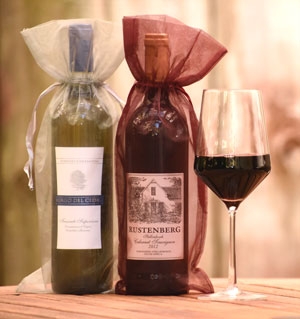The 2016 Château Saint-André Corbin epitomizes the best of St. Émilion and its satellites in the magnificent 2016 vintage. In crafting a traditional blend of Merlot (70%) and Cabernet Franc (30%), Château Saint-André Corbin has once again created the quintessential Right Bank red from the diminutive 470-acre Saint-Georges-Saint-Émilion appellation, an appellation known for lush, fruit-driven wines. Beautiful fruit and sophisticated, complex flavors are readily apparent in the 2016 Château Saint-André Corbin but so are the depth and power inherent in the 2016 vintage. With an intense purple color and an amplifying bouquet of blackberry, cassis, cedar and chocolate, the 2016 Château Saint-André Corbin seduces from the moment it splashes into the glass. Hauntingly beautiful in aroma, this sophisticated and stylish red Bordeaux quickly wins favor in the mouth with a flurry of lush fruit flavors, pretty spice tones, and rich tannins – all of which impart balance and structure to a wine that drinks well now, yet promises even greater reward with additional time in bottle The 2016 Château Saint-André Corbin is the finest wine we have tasted from this wonderful, over-achieving property and that says a lot given Château Saint-André Corbin’s impeccable record under the Saby’s tenure. The 2016 Château Saint-André Corbin is a wine that offers enormous pleasure now and will most assuredly continue to do so for up to a decade or more. For optimal enjoyment, allow this charming red Bordeaux at least 30 minutes or more of aeration before serving at cool room temperature (58°-62° F). Salut!
Fine red wines from St. Émilion and its environs are some of the world’s best wines to bring to table. Their tannic structures and varietal compositions (primarily Merlot and Cabernet Franc) lend themselves to pairing with red meats and hearty meals, especially when the wines are young. However, one need not worry too much about what to serve with the 2016 Château Saint-André Corbin: this delicious red wine shines equally well on its own as it does in the company of all kinds of meats and cheeses. When not enjoying a glass of a mature bottle of this elegant, gracious red Bordeaux all by itself, we suggest pairing it with thin slices of rare beef tenderloin and portabella mushrooms, marinated pork tenderloin grilled to perfection and served with caramelized onions, or roast chicken stuffed with a savory wild rice. Château Saint-André Corbin’s outstanding 2016 Bordeaux also provides the ideal foil to French cheeses such as Fourme d’Ambert, Port Salut and Reblochon. Bon Appétit!
Château Saint-André Corbin is the premier wine estate in the satellite appellation of Saint-Georges-Saint-Émilion and one of the oldest estates in all Bordeaux. The château of Saint-André Corbin sits atop a hill just to the north of St. Émilion where it holds a commanding view of some of Bordeaux’s most illustrious vineyards. Historical records indicate that this ancient 47-acre estate was once owned by the illustrious 4th century poet and Roman Consul, Ausonius, and its wines graced the tables of more than one Roman emperor and his imperial entourage. And, fortunately for us, the wine of Château Saint-André Corbin has not only retained its privileged position over the years, it has improved further under its present ownership – the Saby family.
Although Château Saint-André Corbin has always enjoyed an enviable reputation, the estate’s acquisition by the Saby family in 2003 has brought Saint-André Corbin’s wine to an even higher level of quality. Evidence of this property’s preeminent rise is the acclaim bestowed upon the 2012 Château Saint-André Corbin by the Paris Concours Général Agricole, France’s most prestigious wine competition, and the multiple 90+ ratings on recent vintages, including the 2016 Château Saint-André Corbin (this month’s feature). In short, we know of no other red Bordeaux that offers greater quality and value than Château Saint-André Corbin.
Saint-Émilion is Bordeaux’s most important wine town and the region’s hottest attraction. This walled, medieval village, perched atop a series of hills and surrounded by vines, is unquestionably the most beautiful wine village in all Bordeaux. Indeed, some would argue that it is the most beautiful wine village in all France. Nearly everything about Saint-Émilion is centered on wine; even the church is a cellar. And lest you think that Saint-Émilion has just recently succumbed to contemporary commercialism or sold itself to the modern mania for all that is Bacchanalian, rest assured that very little has changed in principle in this village since antiquity: Saint-Émilion was founded by the Romans, who used it as a viticultural bastion in the then burgeoning area known as Burdigala.
Interestingly, there are two distinct districts of Saint-Émilion, each possessing a special terroir. Both districts produce compelling red wines, but of a different sort. Typically, the côtes or hills upon the escarpment yield the fullest, slowest to mature wines of Saint-Émilion. Here the soil is nearly all limestone and the resulting wine is more apt to act like a great Cabernet-based wine of the Médoc. The other distinct district of Saint-Émilion lies on the plateau adjoining Pomerol, where the soil is comprised of sand and gravel. Here the wines tend to be fleshier and quicker to mature. Each style is authentic Saint-Émilion, which allows the savvy consumer double the pleasure. Add the satellite appellations of St.-Georges-St.-Émilion and Montagne-St.-Émilion, which command the hillsides just outside of the walls of St. Émilion with their distinctive terroirs, as well as Lussac and Puisseguin-St.-Émilion, and the two unique styles of St. Émilion further play out.
Merlot is the predominant grape of Saint-Émilion and the nearby satellite appellations. However, Cabernet Franc and to a lesser extent Cabernet Sauvignon play important supporting roles. However, Saint-Émilion can be produced from Merlot alone or from any combination or percentage of traditional red Bordeaux grape varieties. No commercial white wine is made in any Saint-Émilion appellation nor is it permitted to be sold as Saint-Émilion.

Enjoy Limited Production Estate
Bottled Wines
Discover limited production estate bottled wines such as Vergenoegd's internationally
acclaimed 2005 Cabernet Sauvignon, imported exclusively for our members.


